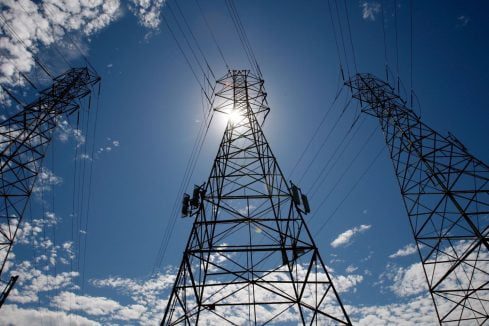2019 marks a big milestone in my career – I started working at SEPA 20 years ago. While on one hand saying that makes me feel old, on the other hand it’s exciting and fascinating for me to reflect back on the amount of change that has happened within the organization and the industry over these two decades.
When I started in 1999, SEPA wasn’t the Smart Electric Power Alliance: it was the Utility PhotoVoltaic Group (UPVG) before becoming the Solar Electric Power Association (version 1.0 of the SEPA acronym) in 2000. At the time, there was no meaningful grid-connected solar industry in the U.S., with just a handful of players doing demonstration projects supported by grant funding. A 50 kW solar project was considered massive in size, and the average cost for a residential system was $10 per watt. Renewable energy didn’t even make it into the EIA’s pie chart for U.S. electricity generation sources, as seen in the table below. Al Gore’s An Inconvenient Truth hadn’t yet put climate change into the public spotlight.
Little by little, all those things have changed. Large-scale solar and wind are now the lowest-cost resources in many states. Energy storage is becoming a viable option. Technology advancements are allowing customers to take control of their own electricity supply and demand. The overall U.S. electricity generation portfolio has become significantly cleaner, with coal dropping to 27% and renewables increasing to almost 20% in 2018, with continued rapid growth on the horizon.
Of all the changes and industry trends I’ve witnessed over the past two decades, I believe the most significant is one we are witnessing today: voluntary utility commitments to get to 100% clean or carbon-free energy within the next two-and-a-half to three decades.
Many states, municipalities, corporations and other entities have also made similar pledges. But, to me, voluntary commitments from investor-owned utilities in vertically integrated states, in particular, are the real indicators that this transition is happening — and is about to accelerate. It’s the tipping point we’ve been anticipating since I entered the industry in 1999.
Take the case of Xcel Energy, who took the lead in announcing their plans to be carbon-free by 2050 late last year. Xcel recently released a report detailing how they closely examined key climate reports and worked with stakeholders to determine how best to align their company goals with those of the Paris Climate Agreement. Xcel’s commitment is significant and requires them to add thousands of MWs of renewables, pursue strategic electrification, and make critical investments in grid infrastructure.
In Idaho, only three years ago, President and CEO Darrel Anderson told stockholders he didn’t believe Idaho Power would ever be able to go to 100% clean power. However, this past March, Anderson announced a plan to get to 100% carbon-free energy by 2045, with the first of nine coal and gas plants closing at the end of this year.
The same is true for MidAmerican Energy. There are no current state mandates in Iowa for carbon-free energy, nothing requiring a change in energy sources. Instead, 91% of customers polled in the service territory said that it’s important for energy to be produced from carbon-free sources, and armed with that customer mandate, MidAmerican is bringing 2,591 MW of wind energy online in the next few years as part of their goal to reach 100% clean energy sources.
Historically, the responsibility of reaching a carbon-free future fell more on the shoulders of state and federal regulators and government, but as we’re seeing today, the electric power industry is making serious commitments to address climate change and the concerns of customers.
As part of SEPA’s continuous evolution to ensure we can provide the most valuable thought leadership, unbiased information and practical solutions to the electric power industry, our Board of Directors recently adopted a bold new vision for the organization: a carbon-free energy system by 2050.
The road there won’t be easy, and it will take the collective effort of stakeholders globally to be successful. SEPA’s role in this team effort, articulated through our mission statement, is to facilitate a smart transition to a clean and modern grid. SEPA is leading the way in four areas of focus, what we call “SEPA Pathways”: Utility Business Models, Regulatory Innovation, Grid Integration and Transportation Electrification.
As we conduct our work on these pathways, we are operating under the following guiding principles:
- Significant increases in clean energy, generated from existing and new technologies, are needed to achieve a carbon-free future.
- The future will be a diverse mix of large-scale generation, distributed energy resources (DER), energy efficiency and enabling technologies.
- Reductions in carbon emissions will occur as the transportation, building and industry sectors become more electrified.
- Investments in the transmission and distribution system are foundational to achieving a carbon-free energy future.
- Diverse business models supporting carbon reduction will be deployed by utilities and other providers that account for geographic, business and policy differences.
- Changes to the power sector need to evolve in a manner that is safe, reliable, secure and affordable.
- Success will require a deliberate collaborative process and proactive engagement with stakeholders and customers.
As exciting as the last 20 years have been in this industry, I am even more excited about what is yet to come.
As Bill Gates says, we always overestimate the change that will occur in the next two years and underestimate the change that will occur in the next ten. So, will it take us until 2050 to get to carbon-free energy? Only time will tell.
To continue the conversation about the future of the electricity sector, join the top electricity stakeholders, from regulators, ISOs, and utilities to technology providers, academics, and government agencies at SEPA’s Grid Evolution Summit in Washington, DC, July 29-August 1. David Eves, EVP, Group President – Utilities at Xcel Energy will be delivering the keynote address.









